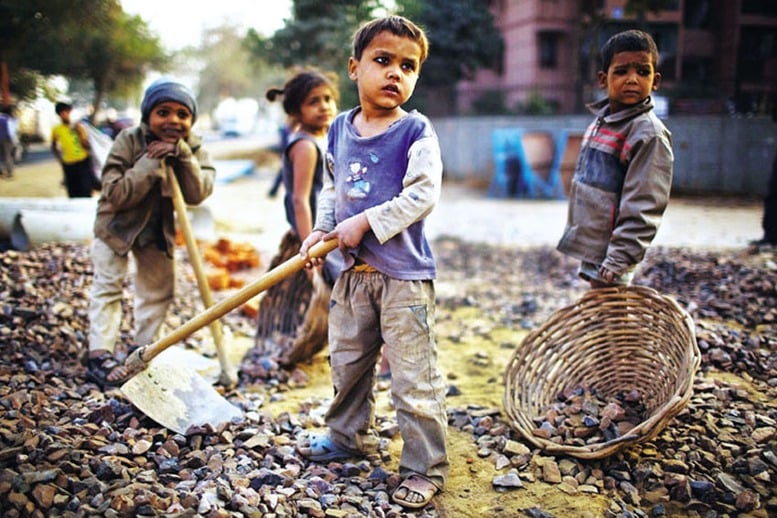
Need to accelerate progress in reducing child labor globally - Illustration photo
These are the figures just announced by the International Labor Organization (ILO) and the United Nations Children's Fund (UNICEF).
Specifically, the latest data shows that the total number of children engaged in child labor has decreased by more than 22 million since 2020, reversing the alarming spike between 2016 and 2020. Despite this positive trend, the world is still far from achieving the goal of eliminating child labor by 2025.
Globally in 2024, the harsh reality remains that millions of children are still denied the right to learn, play and simply be children, according to the Child Labour report released a day before World Day Against Child Labour and International Day of Play.
“Children need to go to school. Parents themselves must be supported and have access to decent work so that they can afford to send their children to school, rather than having to sell goods in the market or work on family farms to support their families. We still have a long way to go before we achieve the goal of eliminating child labour,” said Gilbert F. Houngbo, ILO Director-General.
According to the report, agriculture remains the largest employer of child labour, accounting for 61% of all cases, followed by the service sector (27%), such as domestic work and market sales, and the industrial sector (13%), including mining and manufacturing. Boys are more likely to be involved in child labour than girls at all ages.
In the Asia and Pacific region, the child labour rate has achieved the most significant reduction since 2020. The child labour rate fell from 5.6% to 3.1% (from 49 million to 28 million children). Latin America and the Caribbean also achieved a relative reduction of 8% in the child labour rate and an 11% reduction in the total number of cases.
Sub-Saharan Africa continues to be the worst-hit region, accounting for nearly two-thirds of all children in child labour – some 87 million. Although the proportion has declined from 23.9% to 21.5%, the overall number of children in child labour remains high in the context of population growth.
UNICEF warns that funding needs to be maintained and increased both domestically and globally if the gains are to be sustained. Cuts in support for education, social protection and livelihoods could push already vulnerable families to the brink, forcing some to send their children to work. Meanwhile, shrinking investment in data collection will make it harder to see and address the problem.
Child labour affects children’s education, limits their rights and future opportunities, and puts them at risk of physical and mental harm. It is also a consequence of poverty and lack of access to quality education, forcing families to send their children to work, perpetuating the cycle from generation to generation.
Since 2000, child labour has almost halved, from 246 million to 138 million, but the current pace is still too slow, the world is still far from achieving the goal of eliminating child labour globally by 2025.
To accelerate this progress, UNICEF and ILO call on countries to invest in social protection systems, especially for vulnerable households, including universal child benefits, so that families do not have to let children work.
Strengthen child protection systems to identify, prevent and respond to children at risk, especially those exposed to the worst forms of child labour. Provide universal access to quality education, especially in rural and crisis-affected areas, so that every child learns.
At the same time, ensure decent work for adults and youth, including the right of workers to organize and defend their rights. Enforce laws and corporate accountability to end exploitation and protect children throughout supply chains.
Thuy Ha
Source: https://baochinhphu.vn/can-day-nhanh-tien-do-giam-lao-dong-tre-em-tren-toan-cau-102250619181956078.htm








![[Video] Opening of the National Press Forum 2025](https://vphoto.vietnam.vn/thumb/402x226/vietnam/resource/IMAGE/2025/6/19/b7a3477903b3458abfbb2b364af5b689)

























































































Comment (0)